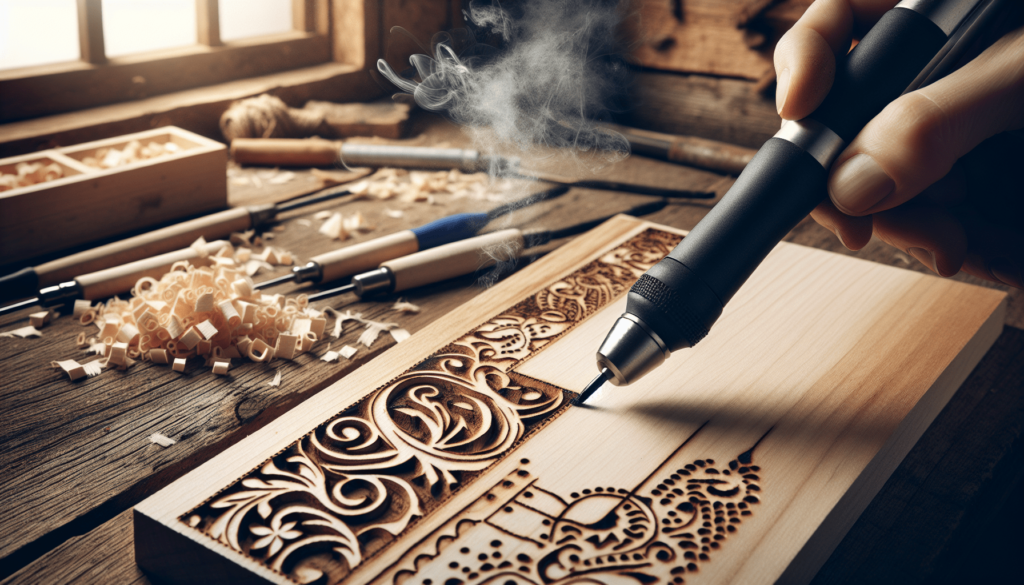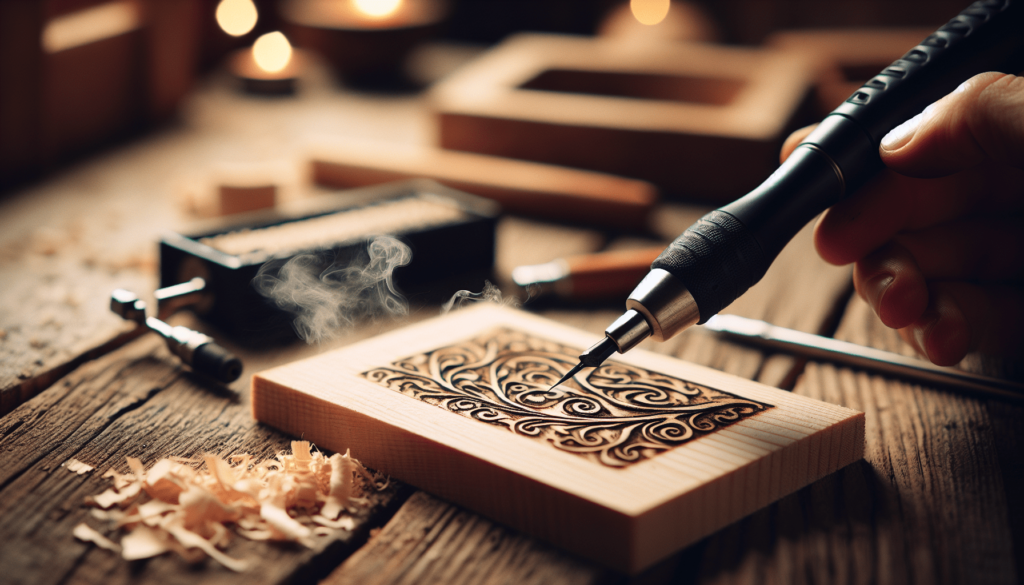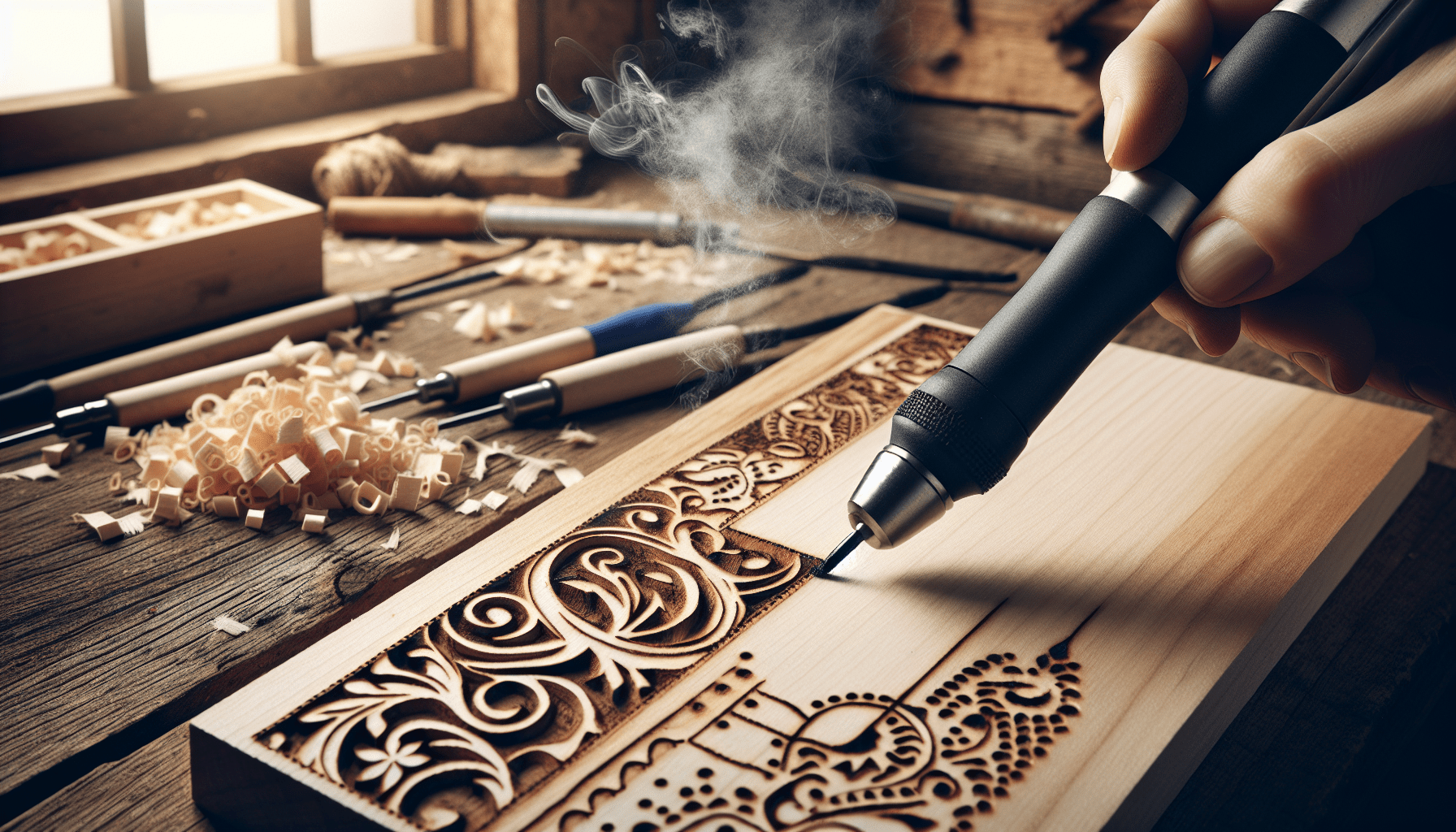From the moment I first picked up a burning tool, I was immediately fascinated by the art of wood burning. It can seem intimidating at first—carefully guiding a hot pen over a wooden surface to create intricate designs. But, with a bit of patience and practice, I discovered that wood burning isn’t as difficult to learn as one might think. The key lies in starting simple, mastering basic techniques, and gradually tackling more complex projects. In my journey, the most rewarding part has been watching my skills improve over time, turning pieces of wood into personal masterpieces that tell a story with each burn.
Is Wood Burning Hard To Learn?
Have you ever found yourself intrigued by the art of wood burning and wondered, “Is wood burning hard to learn?” If so, you’re in good company because I was right there with you not too long ago. Picture this: me sitting in my small, cluttered apartment, scrolling through Pinterest, only to stumble across these exquisite wooden panels adorned with intricate designs. My fingers itched to create something similar. But where to begin?

What is Wood Burning?
Alright, let’s start with the basics: What the heck is wood burning? Also known as pyrography, wood burning is the art of using a heated tool to create designs on wood surfaces. Think of it as a blend between drawing and sculpting, except with a dash of controlled fire. Sounds dramatic, right?
The Tools of the Trade
Before diving headfirst into this fiery ocean, you’ll need some gear. Don’t worry; it’s not as complicated as it sounds.
| Tool | Description |
|---|---|
| Wood Burning Pen | This is your primary instrument, akin to a painter’s brush. It comes with different tips for various kinds of strokes. |
| Wood | Obviously, you’ll need something to burn on. Softwoods like basswood and pine are great to start with. |
| Stencils and Patterns | If freehand isn’t your style, these can be lifesavers. |
| Heat Settings | Adjustable settings on some burning tools allow for more control and finer details. |
The Initial Learning Curve
So, back to the million-dollar question: is wood burning tough to master? My honest answer: it depends. Your initial attempts might look like something a toddler scrawled with a crayon, but that’s okay. Here’s the kicker: those first wobbly lines are your gateway to mastery.
Basic Techniques
Trust me, it’s not rocket science—unless you decide to burn complex astrophysical diagrams, then yes, maybe it is.
Outlining
Simple but essential. Outlining shapes your art and provides guidelines for where to go next. Start with something small like a leaf or a basic geometric pattern.
Shading
Ah, shading—the technique that takes you from “meh” to “wow.” Use the broader tips for shading larger areas and finer tips for subtle gradient effects.
Detailing
This involves intricacies like fine lines and delicate patterns that make your piece unique. Patience is key here.
Practice Makes Perfect
Ah, the evergreen mantra: practice makes perfect. And it’s true! Every stroke, every mistake, and every “oops” moment makes you better.
Small Projects to Start With
Starting small will boost your confidence and skill. Here are some ideas:
| Project | Description |
|---|---|
| Coasters | Easy to make and useful! Practice simple patterns or initials. |
| Keychains | Small, but versatile. You can try different wood types and shapes. |
| Bookmarks | Thin and flat, these are great for practicing precision. |
Learning from Mistakes
If you mess up—and you will—that’s actually fantastic news. Every mistake teaches you something new. My early pieces looked like a hot mess, quite literally. But I learned to control the heat better and understood how different woods react.
Getting Advanced
Once you’re comfortable with the basics, you can venture into more elaborate designs and techniques.
Working with Different Woods
Different woods offer different textures and burning characteristics. Hardwoods like oak create darker burns but require more heat and effort, whereas softwoods burn easily but may lack in detail.
Advanced Techniques
Special methods like cross-hatching, stippling, or layering colors can add depth and dimension to your artwork. This is where your creativity really gets to shine.

Community and Resources
The internet is a goldmine of resources. From YouTube tutorials to online forums, there’s a whole community out there ready to help you with tips, tricks, and support.
Online Tutorials
Many talented artists share step-by-step tutorials on platforms like YouTube and Instagram. These can be incredibly helpful for a visual learner like me.
Forums and Groups
Forums like Reddit’s pyrography group or various Facebook groups are great for sharing your work, asking for advice, and learning from others’ experiences.
Is It Worth It?
As with any skill, wood burning demands time, patience, and practice. But the satisfaction of seeing your progress makes it worth every moment.
Cost vs. Satisfaction
Initially, the cost might seem like a hurdle—buying the tools, wood, and safety equipment. But once you start, you’ll find that the emotional payoff far exceeds the monetary investment. There’s something incredibly fulfilling about creating art that is uniquely yours.
Personal Growth
Learning a new skill isn’t just about the skill itself; it’s about learning to be patient, persistent, and resilient. Wood burning teaches you all of this and more.
Safety First
By now, you’re probably itching to grab a pen and start your first project, but let’s have a quick chat about safety. Yes, I know, boring, but essential.
Ventilation
Always work in a well-ventilated area. The fumes from burning wood can be harmful, especially when working with certain kinds of wood.
Protective Gear
Wear a mask and safety glasses. Don’t skimp on this—it’s your health we’re talking about!
Fire Safety
Keep a fire extinguisher nearby, and never leave your wood burning tool unattended.
The Final Verdict
So, is wood burning hard to learn? It’s as challenging as you make it. Start simple, practice regularly, and don’t be afraid to mess up. Every mistake is a step toward mastery. And remember, in the grand scheme of things, you’re wielding controlled fire to create art. How cool is that?
Feel free to get started, make some wonderfully charred creations, and join a community of people who understand the sheer joy of turning a piece of wood into a piece of art. Your journey into the world of pyrography awaits!
Step-by-Step Beginner’s Guide
To wrap things up, let’s go through a simple step-by-step guide to get you started on your wood burning journey.
Step 1: Gather Supplies
Start with the basics: a wood burning pen, a piece of wood, stencils, and safety gear. Don’t overcomplicate it—stick to what you need for your first project.
Step 2: Choose a Simple Design
Pick an easy pattern or download a stencil. Trust me, keep it simple for your first few goes.
Step 3: Outline the Design
Use a pencil to lightly sketch your design on the wood. This will serve as your guideline. Think of it as training wheels.
Step 4: Start Burning
Set your wood burning pen to a low heat setting to begin with and trace over your pencil outline. Take your time; there’s no rush.
Step 5: Add Details and Shading
Once your outline is complete, you can start experimenting with shading and detailing. Use different tips and heat settings to see what works best.
Step 6: Finish Up
Give your piece a light sanding if needed, and apply a wood finish to protect it. Now, show it off to your friends and family!
Resources to Continue Learning
To help you in your continued learning journey, here are some valuable resources:
| Resource | Description |
|---|---|
| YouTube Channels | Channels like “Pyrography Made Easy” provide excellent tutorials. |
| Books | Books like “Learn to Burn: A Step-by-Step Guide” are incredibly informative. |
| Websites & Blogs | Sites like pyrographyonline.com offer free patterns and tips. |
Final Thoughts
Wood burning is one of those skills that can seem daunting at first but becomes incredibly rewarding with time and practice. It’s a unique blend of artistry and technique that allows for endless creativity. Whether you’re looking to pick up a new hobby or dive deeper into the art world, wood burning offers an exciting and fulfilling avenue to explore.
So, roll up your sleeves, grab that wood burning pen, and start creating. Who knows? Your masterpiece might just be one burn away.

